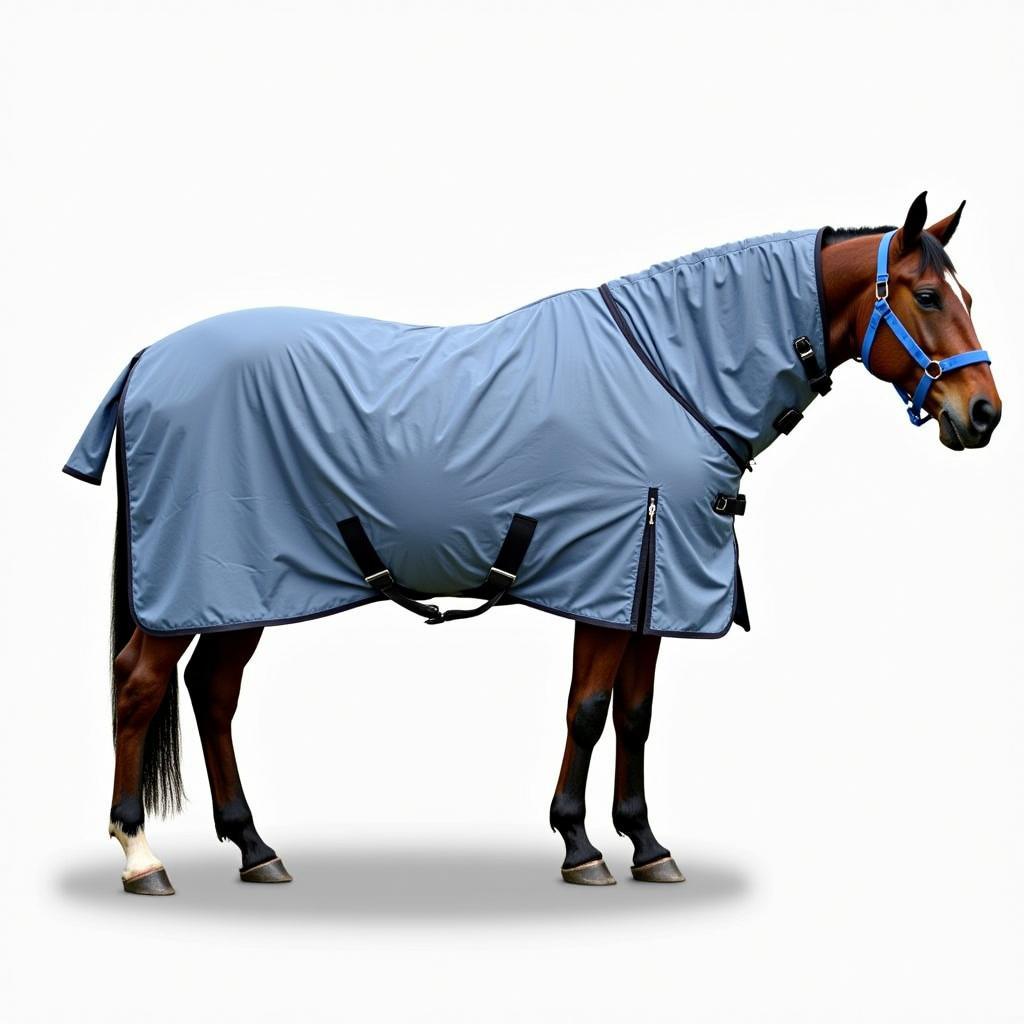Understanding a horse blanket temperature chart is crucial for every horse owner. Proper blanketing ensures your horse stays comfortable and healthy during colder months. This guide will delve into the intricacies of these charts, helping you choose the perfect blanket for your equine companion.
Choosing the right horse blanket can feel overwhelming with the variety of weights, styles, and materials available. A horse blanket temperature chart provides a valuable framework for selecting the appropriate blanket based on the prevailing temperature. This guide will cover everything you need to know, from interpreting the chart to considering individual horse factors. Let’s dive in and equip you with the knowledge to keep your horse cozy and protected from the elements. You can find great deals on closeout horse blankets at Justus Horses USA.
Understanding the Basics of a Blanket Temperature Chart Horse
A Blanket Temperature Chart Horse owners rely on typically correlates temperature ranges with recommended blanket weights. These charts often categorize blankets into lightweight, medium-weight, and heavyweight options, each suited for specific temperature ranges. It’s important to remember that these charts offer general guidelines, and individual horse needs may vary.
Decoding the Temperature Ranges
Most charts break down temperature ranges into increments of 5-10 degrees Fahrenheit. For instance, a lightweight blanket might be recommended for temperatures between 40-50°F, while a medium-weight blanket would be suitable for 30-40°F. Heavier blankets are generally advised for temperatures below freezing.
Considering Blanket Fill
The “fill” of a horse blanket refers to the insulating material inside, typically measured in grams. Higher fill numbers indicate greater warmth. A blanket temperature chart horse owners can use often includes fill recommendations alongside temperature ranges.
Factors Beyond the Blanket Temperature Chart for Horses
While a blanket temperature chart horse owners use provides a good starting point, various factors influence the best blanket choice for your individual horse.
Age and Health
Older horses and those with health conditions may require heavier blankets than younger, healthy horses in the same temperature. These horses often have a reduced ability to regulate their body temperature.
Coat Condition
Horses with thick winter coats might need less blanketing than those with thinner coats, even at the same temperature. Clipped horses will almost always require blanketing, even in relatively mild weather.
Housing and Environment
Horses housed in stalls generally require less blanketing than those living outdoors, as stalls provide some protection from the elements. Windy conditions can significantly reduce the effectiveness of a blanket, necessitating a heavier option. A horse warmer might be beneficial in extremely cold climates.
Moisture and Waterproofing
Consider whether the blanket needs to be waterproof. A rain sheet for horses is essential for wet conditions. Blankets should be breathable to prevent overheating and moisture buildup underneath.
Tips for Using a Blanket Temperature Chart Horse Owners Should Know
- Monitor your horse: Regularly check your horse’s temperature and comfort level under the blanket. Feel underneath the blanket to ensure they aren’t sweating or shivering.
- Adjust as needed: Don’t rely solely on the chart. Adjust the blanket weight based on your horse’s individual needs and the specific weather conditions.
- Layer blankets: Consider layering lighter blankets to achieve the desired warmth rather than using one extremely heavy blanket. This provides more flexibility in adjusting to fluctuating temperatures. You can also add horse bedspreads for extra warmth in the stable.
 Layered Horse Blankets for Versatility
Layered Horse Blankets for Versatility
Conclusion
A blanket temperature chart horse owners can reference serves as a valuable guide, but remember to consider individual horse factors. By observing your horse, adjusting as needed, and understanding the nuances of blanketing, you can keep your equine companion warm, comfortable, and healthy throughout the winter months. Choosing the correct blanket is a testament to responsible horse ownership, ensuring your horse thrives even in the chilliest weather. Check out our selection of horse tees for under-blanket layering options.
FAQ
- What if my horse doesn’t like wearing a blanket? Some horses take time to adjust to wearing a blanket. Introduce it gradually and ensure it fits properly.
- How often should I check my horse under their blanket? Check at least twice daily, especially in fluctuating temperatures.
- Can I leave a wet blanket on my horse? No, a wet blanket can cause chills and skin irritation. Remove and dry it immediately.
- What is the best fill for a winter blanket? The best fill depends on your climate and your horse’s individual needs. Consult a blanket temperature chart horse owners can understand.
- How do I know if my horse is too hot under their blanket? Feel under the blanket for sweat or excessive warmth.
Common Scenarios
- Scenario: Your horse is shivering even with a medium-weight blanket at 35°F. Solution: Consider a heavier blanket or adding layers. Check for wind and moisture.
- Scenario: Your horse is sweating under a lightweight blanket at 45°F. Solution: Remove the blanket or switch to a lighter option. Consider the horse’s coat and activity level.
Further Reading and Resources
For more information on horse care and blankets, explore other articles on our website.
Need Help?
Contact us for assistance: Phone: 0772127271, Email: [email protected] Or visit us at: QGM2+WX2, Vị Trung, Vị Thuỷ, Hậu Giang, Việt Nam. We have a 24/7 customer service team.